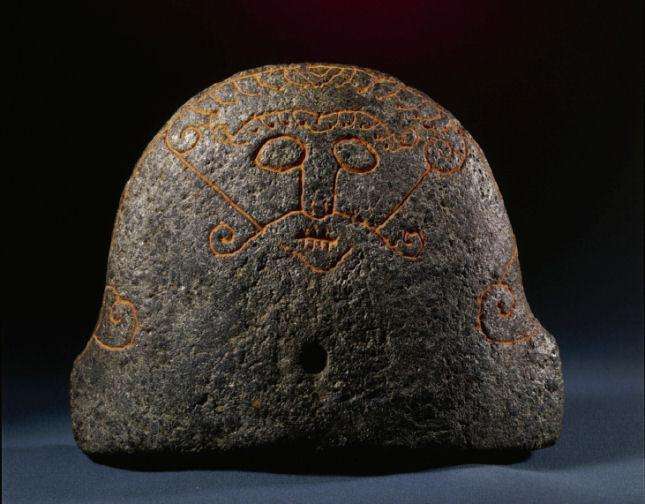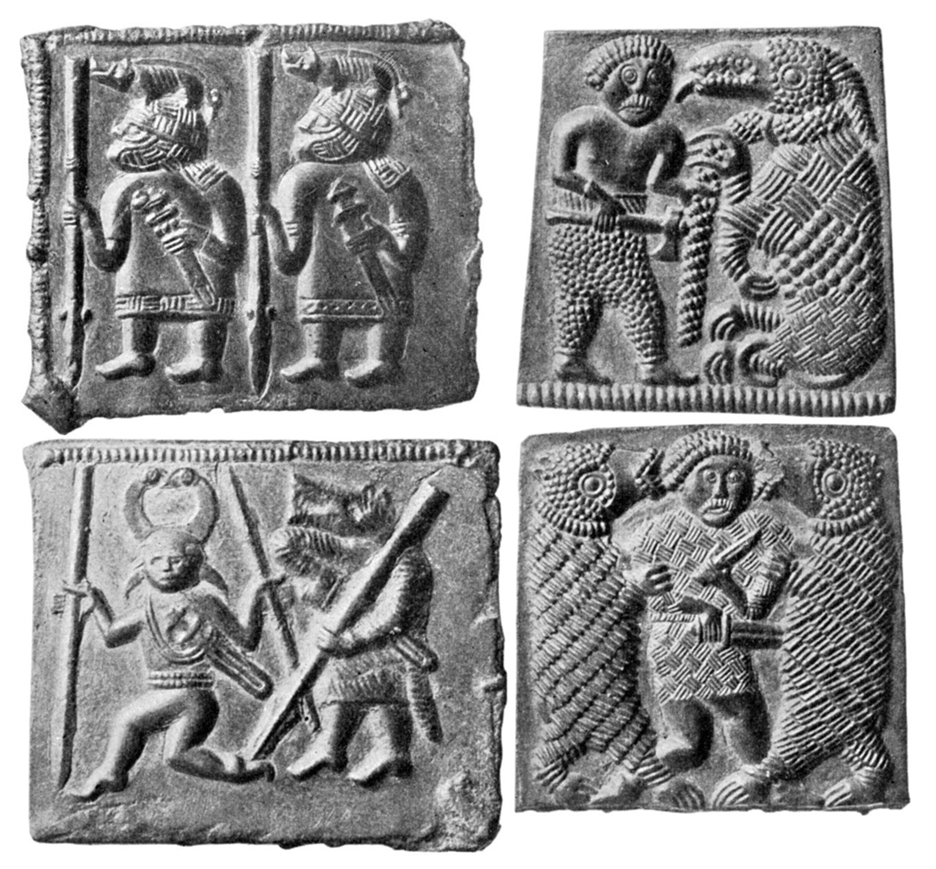
The Snaptun Stone, Loki is shown with his mouth sewn shut
The Norse myths are not just tales of gods and monsters — they are a worldview carved into the memories of the North. Rooted in oral tradition, passed down in skaldic poetry and later written in Icelandic sagas, the Viking mythology we know today is a map of the cosmos, a family saga, and a prophecy of the world’s end — and rebirth.
THE BEGINNING: COSMIC CHAOS AND CREATION
Before time began, there was nothing — only Ginnungagap, a yawning void. On one side, the icy realm of Niflheim. On the other, the fiery world of Muspelheim. When these opposites met, the frost melted, and from the drops arose Ymir, the first giant, and Audhumla, a cosmic cow who licked salty ice blocks until she uncovered Búri, grandfather of the gods.
Ymir’s death was the first act of order. The gods Odin, Vili, and Ve — descendants of Búri — slew Ymir and used his body to shape the world:
- His flesh became the earth
- His blood, the seas
- His skull, the sky
- His bones, the mountains
- His hair, the forests
- His brains? Well… those became the clouds.
They placed the world-tree, Yggdrasil, at the center of existence — a sacred ash connecting nine realms.
MAIN GODS OF THE NORSE PANTHEON

Torslunda Plates with depiction of God Odin
The Norse pantheon is divided into two tribes: Æsir and Vanir — once enemies, they later united through a peace treaty (and hostage exchange, of course).
Here are some of the key deities in the Viking cosmos:
- Odin – The Allfather. God of wisdom, poetry, war, and death. He sacrificed an eye for knowledge and hung himself on Yggdrasil to learn the runes.
- Frigg – Odin’s wife, goddess of foresight and motherhood. Silent, but all-knowing.
- Thor – Thunder god, protector of Midgard. Known for his hammer Mjölnir, goats, and short temper.
- Loki – Trickster and shape-shifter. Blood-brother to Odin, father to monsters. Both clever and catastrophic.
- Freyja – Goddess of love, beauty, war, and seiðr (magic). Drives a chariot pulled by cats.
- Freyr – Her brother. A Vanir god of fertility, prosperity, and peace. Has a ship that folds into a pouch and a sword that fights on its own.
- Týr – God of law and heroism. Gave up his hand to chain the wolf Fenrir.
RAGNAROK: THE END OF DAYS (AND A NEW BEGINNING)
According to prophecy, the world is destined to end in fire and flood — Ragnarok.
- The signs begin with the Fimbulwinter — three long winters without summer.
- Loki breaks free, Fenrir the wolf devours the sun, and the Midgard Serpent Jörmungandr rises from the sea.
- The gods and monsters meet in final battle: Thor kills Jörmungandr but dies from its venom. Odin is devoured by Fenrir. Loki and Heimdall slay each other.
Yet, not all is lost. The world sinks beneath the sea, but it rises again, green and fresh. A few gods survive. Two humans, Líf and Lífthrasir, emerge to repopulate the world.
The cycle begins anew.
WHY IT STILL MATTERS
Norse mythology wasn’t just religion — it was how the Vikings explained fate, nature, and human courage. Their gods were flawed, their world doomed, but bravery and honor still mattered. It’s no surprise that these myths continue to inspire modern culture, art, and identity across Scandinavia and beyond.
And remember — it all started with fire, ice, and a very confused cosmic cow.
Algizrune Art – Historical Jewelry Makers — storytellers, artists, and whispers of the ancestors